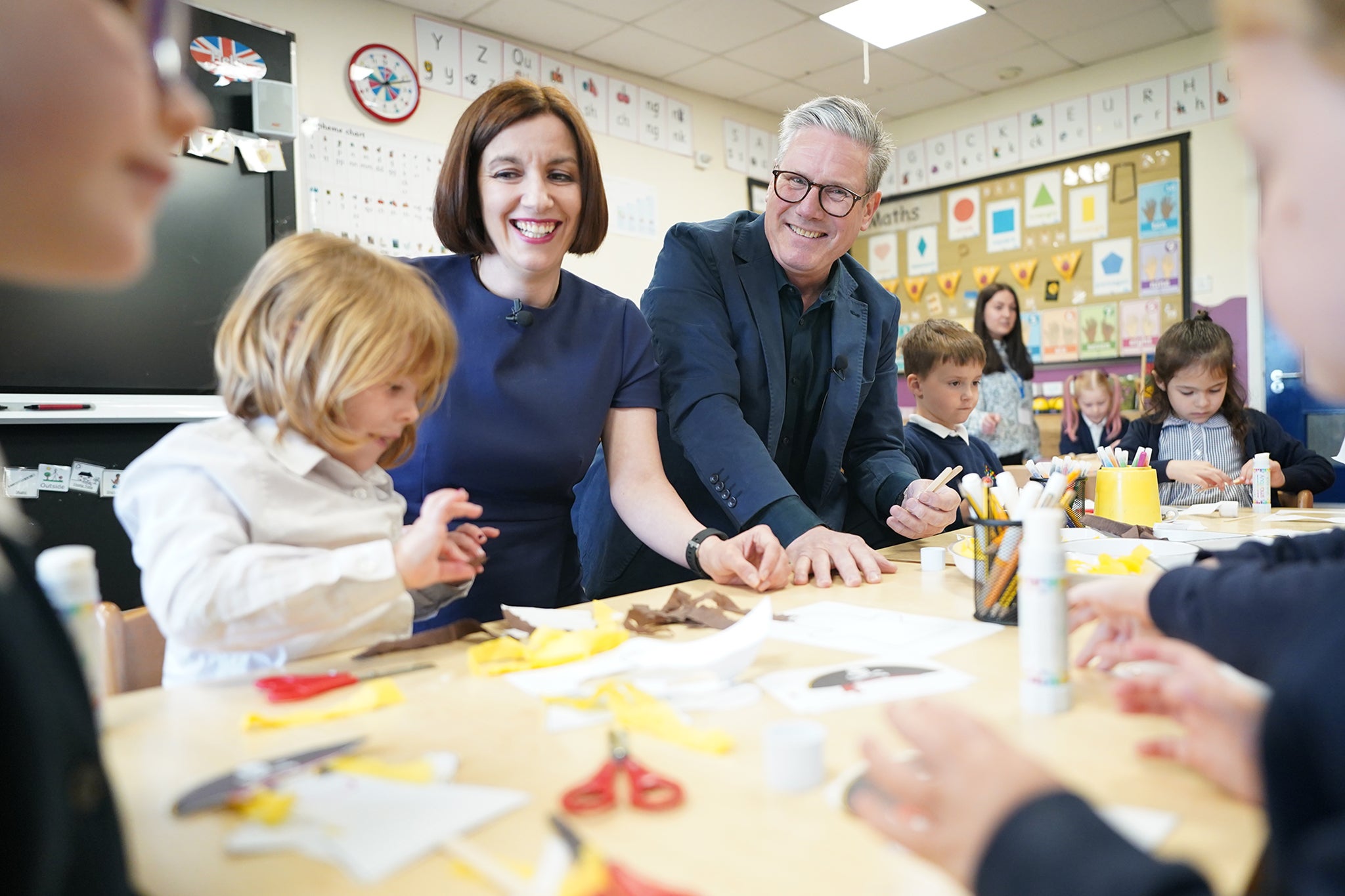How could Keir Starmer and Labour’s promise of 100,000 new nursery places work?
‘If you are boosting places, you need to boost the number of people working in the sector to deliver this,’ expert says

Your support helps us to tell the story
From reproductive rights to climate change to Big Tech, The Independent is on the ground when the story is developing. Whether it's investigating the financials of Elon Musk's pro-Trump PAC or producing our latest documentary, 'The A Word', which shines a light on the American women fighting for reproductive rights, we know how important it is to parse out the facts from the messaging.
At such a critical moment in US history, we need reporters on the ground. Your donation allows us to keep sending journalists to speak to both sides of the story.
The Independent is trusted by Americans across the entire political spectrum. And unlike many other quality news outlets, we choose not to lock Americans out of our reporting and analysis with paywalls. We believe quality journalism should be available to everyone, paid for by those who can afford it.
Your support makes all the difference.Labour has unveiled plans to transform unused primary school classrooms into 3,300 new nurseries to create an additional 100,000 childcare places.
The announcement follows warnings from campaigners that the childcare sector is facing a staffing and funding crisis – with parents struggling to afford childcare and find places for their children.
Sir Keir Starmer said: “Labour will roll up our sleeves and take the tough decisions needed to support parents’ progression, improve kids’ life chances and ultimately, drive growth. We will create the childcare places needed to turn the page, and rebuild Britain.”
However, questions have been raised by experts about how Labour’s new initiative will work in practice.
What is the new policy?
Labour’s proposals will see empty or under-used classrooms in England’s primary schools turned into nurseries, with the party’s leader Sir Keir Starmer warning a deficit of childcare places means parents’ careers are impeded and children are “starting school already behind”.
Surplus school spaces have been caused by falling birth rates and the plans are estimated to cost around £40,000 per classroom.
The nurseries can be run by schools or local private or voluntary-sector providers, with the initiative funded through the introduction of VAT on private school fees.
Labour said it will prioritise creating the new nursery places in so-called childcare deserts – areas of the country with a stark lack of spaces.
What will the policy need to do to work?
Campaigners and experts told The Independent they are positive about the new policy but raised questions about how it will work in practice.
Neil Leitch, chief executive of the Early Years Alliance, said the scheme must involve existing providers to be successful.
He added: “The early years are not a straight replication of what happens in a primary school. It is a specialist area and with schools already struggling to fulfil their own needs, there are question marks around how this would be rolled out in practice.”

What concerns do experts have about the new policy?
Mr Leitch – whose organisation represents nurseries, preschools and registered childminders – said: “If the initiative is specifically plugging the gap where there are shortages, I think it is difficult for anyone to be critical of addressing that existing need.
“But there are still a lot of unanswered questions about the hours they will be provided with. Is it going to be term time only. Is it from nine to three?”
Helen Donohoe, chief executive of the Professional Association for Childcare and Early Years (Pacey), suggested the policy is too focused on “bricks and mortar” and must pay more attention to the recruitment and retention crisis engulfing the sector.
“The most important part of early years provision is about the workforce and the people who deliver it,” she said. “One of the most important things we are calling for is a proper strategy for the workforce. We need to have people in the sector who are properly invested in, in terms of training, development, career prospects and respect.”
She said Labour’s announcement failed to acknowledge the important role childminders play in the sector and the “desperate need” to tackle falling numbers in the workforce.
Sarah Ronan, director of the Early Education and Childcare Coalition, echoed her concerns about the staffing crisis, saying: “If you are boosting places, you need to boost the number of people working in the sector to deliver this. What we want to see from Labour in the first year of government is launching a new workforce strategy.”
She added: “Our experience and observation is Labour has taken its time to develop its policy. That is one of the luxuries of being in opposition - you are under less pressure.”
Join our commenting forum
Join thought-provoking conversations, follow other Independent readers and see their replies
Comments